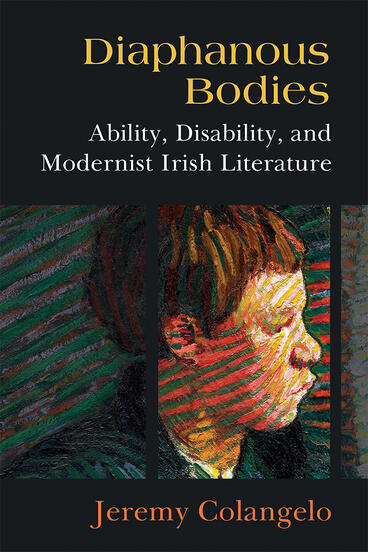Diaphanous Bodies
Ability, Disability, and Modernist Irish Literature
Analyzing the invisible abled body through the work of Joyce, Beckett, Egerton, and Bowen
Description
Diaphanous Bodies: Ability, Disability, and Modernist Irish Literature examines ability, as a category of embodiment and embodied experience, and in the process opens up a new area of inquiry in the growing field of literary disability studies. It argues that the construction of ability arises through a process of exclusion and forgetting, in which the depiction of sensory information and epistemological judgment subtly (or sometimes un-subtly) elide the fact of embodied subjectivity. The result is what Colangelo calls “the myth of the diaphanous abled body,” a fiction that holds that an abled body is one which does not participate in or situate experience. The diaphanous abled body underwrites the myth that abled and disabled constitute two distinct categories of being rather than points on a constantly shifting continuum.
In any system of marginalization, the dominant identity always sets itself up as epistemologically and experientially superior to whichever group it separates itself from. Indeed, the norm is always most powerful when it is understood as an empty category or a view from nowhere. Diaphanous Bodies explores the phantom body that underwrites the artificial dichotomy between abled and disabled, upon which the representation of embodied experience depends.
Jeremy Colangelo is SSHRC Post-doctoral Fellow at SUNY Buffalo and Lecturer at King’s University College at The University of Western Ontario. He is the editor of Joyce Writing Disability.
Reviews
“Timely and precisely argued, Diaphanous Bodies marks an original intervention in both disability studies and Irish studies (and Modernism as well) by examining the ways in which four Irish modernist writers (Joyce, Beckett, Egerton, and Bowen) can help us think about bodily ‘ability’ being an empty, fictitious construct. I find this book to be truly excellent.”
- Samuel Slote
—Samuel Slote, Trinity College Dublin
“Jeremy Colangelo has written a kind of ghost story about a body that does not exist. That body, the ‘diaphanous body,’ is the presumptive norm against which disability is measured, cited, and reinforced. Instead of considering disability as a stigmatized outlier to normal embodiment, Colangelo sees it as constitutive of what we call ability. His subtle readings of four Irish modernist authors—James Joyce, Samuel Beckett, George Egerton, and Elizabeth Bowen—offer brilliant case studies of disability as the modality by which nation, gender, sexuality and race are lived. This is a major contribution to disability studies specifically and cultural analysis more generally.”
- Michael Davidson
—Michael Davidson, University of California, San Diego
Honorable Mention: Modern Language Association (MLA) 2022 Prize for Independent Scholars
- MLA Prize for Independent Scholars

